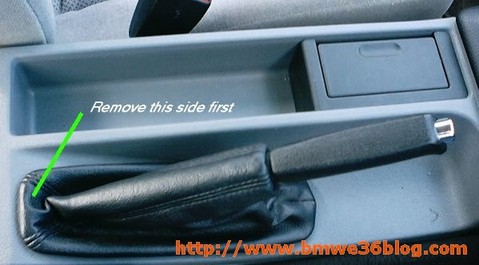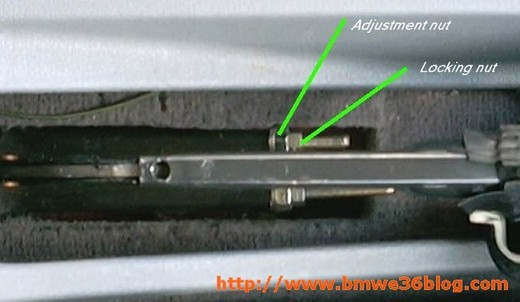This is a list of tips for the BMW E36 owners. Some are for the new owners and some are for the experienced and some of these tips are made just for fun. Read the list carefully, I hope you find it useful and enjoyable:-
Note: I underlined some of the tips that I think are very important.
The coolant pump (water pump) will either fail or start leaking.
The upper radiator hose from the thermostat housing will break.
The cooling system may require several bleed sessions to completely rid the system of air. The coolant low indication will appear on the OBC.
The VANOS rattles like pebbles in a tin can.
The valve train sounds like a diesel after sitting for a few days or on cold morning start ups.
The brake pad sensors do not require replacement unless the brake pad symbol is illuminated in the instrument cluster.
The brake circuit failure indication on the OBC is cleared by replacing the switch located above the brake pedal.
The clutch pedal squeaks and moves laterally due to worn bushings. Replace with Delrin AF bushings.
The clutch slave cylinder is a high fail component. Replace it and bleed the clutch system before dropping large cash on a clutch job.
Flush and bleed the brake fluid every two years.
Flush and bleed the cooling system every two years. Use BMW coolant and distilled water 50/50 mix.
Replace the thermostat housing with an aluminum aftermarket.
There are no adverse effects of using synthetic fluids at any mileage.
The shifter can be replaced with a short shift kit, including Delrin AF bushings, for ~$175.00
Wheel offset means the number of millimeters the mounting surface is from the centerline of the rim.
Buy a quality clicker type torque wrench.
Buy a Bentley Manual.
Batteries fail when the weather turns cold.
Belt tensioner and idler pullies fail and make hideous noises.
Buy a set of Blitz Rhino ramps.
Mobil 1 synthetic engine oil is available at Wal-Mart for cheap.
Distilled water is in the water aisle at the grocery store.
Buy a quality floor jack.
Buy quality jack stands.
Buy wheel chocks.
Buy a fire extinguisher.
Torque wheel bolts to spec. to avoid rotor warp.
Establish a good relationship with the parts guy at the local dealer.
Tip said parts guy.
Clutch Judder is normal in traffic jams due to hot clutch plates
Don’t buy Lexus type rear lights, its not big nor clever!
Does my car have LSD? Solution; get in some dirt or sandy pavement (as not to abuse the car) and spin the damn tires, or jack the rear up and turn one rear wheel and see if the other spins the same way.
Yellowing and faded plastic headlight covers can be restored by using Mequiars #10 and #17 Clear Plastic Cleaner and Polish
The dealer will try to [Oops!] you! If there are no independent bimmer mechanics in your area, leave a jar of vaseline with the dealership service manager along with your keys
The check engine light is USUALLY caused by the o2 sensor but there may be other reasons for it to be set off
The little O with ridges around it are the brake pad sensors. They are in the LF and RR
The e36 does have a ‘natural’ lean when driverless and looked at from behind
DTM tips were invented Osama bin Laden….don’t support terrorism
OBD2 cars cannot be ‘chipped’ there must be a software download
Chips and ‘sharked’ downloads merely advance the ignition timing and will not make your car beat a Corvette
E36’s are not drag cars, due to their diff ratios. If an Integra beats you, your stoopid azz deserves it
Larger rims and speaker boxes will add weight and slow down your car although you think louder means it’s moving faster
When you hear a “thunk” from the middle of the car, it’s probably the Guibo. (flex disk)
When you hear a “thunk” from the back of the car, it’s probably the Rear Shock Mounts. (RSMs)
If it’s cold, and you have trouble starting the car, you probably have a cold starting problem.
$tealer survival list includes: credit card with high credit limit, ETK & TIS, an attorney, and Vaseline.
Q: I just changed my spark plugs now I’m getting rough idle.
A: Gee, could it be the new Platinum+4 spark plugs you just put in?
RTFM – Read the Farking Manual!
The *ding* you hear when it is cold out means It IS cold out, duh! (dings at 38F)
325/328/M3 exhausts are interchangeable. 318 are not.
Buy an genuine BMW water pump
An M3 lever is a short shifter for a 325
A Z3 lever is a short shifter for a 328
Have all rear bushings inspected regularly on 325s
Oil the seats regularly
There is a moonroof available but it is very expensive.
If you want nitrous, you’ve bought the wrong car 😆 .
The value of a car does not increase with mods by any logical amount
Yes, red cars ARE faster
This car will NOT get you laid.
A faulty seatbelt sensor will cause the SRS warning light to stay on
Not closing the gas cap all the way will cause an engine warning light just about every time.
Once you take the dashboard apart you will NEVER get the glovebox door to line up perfectly again.
before disconnecting the battery. Make sure you write down the radio code or have the radio code card that comes in the owners manual.
The most popular setup of aftermarket name brand shocks for the E36 are H&R w/ Bilsteins.
The tire in the trunk helps to maintain a near 50-50 weight ratio. If you decide to auto-X the car, you may want to leave the spare tire in the car.
For OBDI E36’s you can use the pedal trick to get the fault codes. For OBDII, you will need a code reader.
If you find oil in your spark plug well, most likely cause is that your valve cover gasket is leaking.
You can “double lock” your doors by turning your key all the way to the right from the drivers side door and all the way left from the passenger side door.
The two significant problems on the early 318’s were the profile gasket (which is not a head gasket) and the Bad Valeo alternators
Pulsating headlights usually indicates your voltage regulator or alternator needs changing
The profile gasket affected only the M42 engines
The 318’s have had 3 separate belt and pulley configurations between the M42 and M44
Altezza tailights were created by Satan himself…do not support raw evil
Chips do work, but the wont make your car wheelie like herbie the luv bug it will simply increase your ignition timing for a more robust/smoother torque curve



























 (4.86 out of 5)
(4.86 out of 5) (4.07 out of 5)
(4.07 out of 5)



